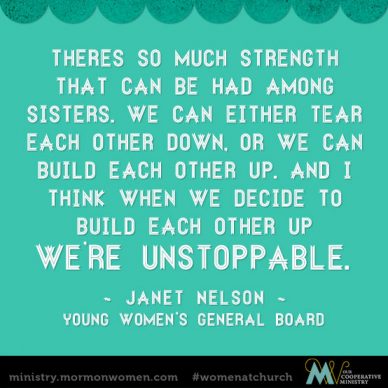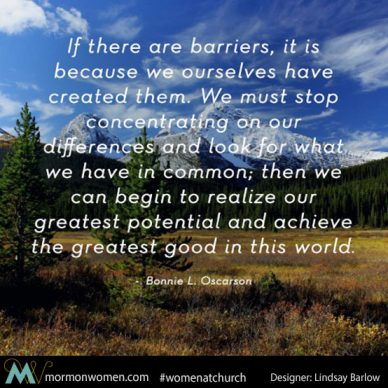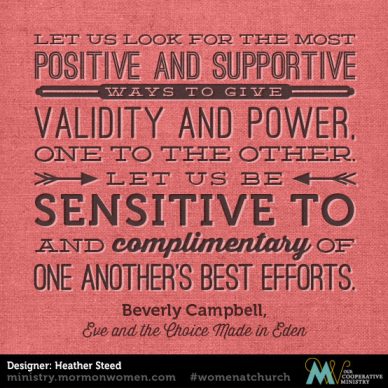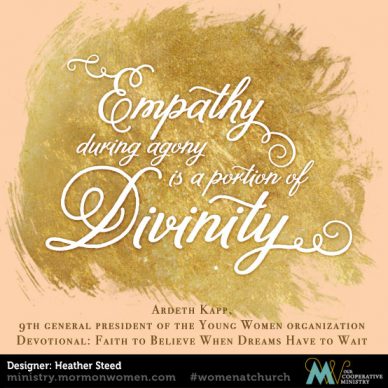The Gospel Doctrine lesson #12; scriptures Doctrine and Covenants 29:1–8; 33:3–7; 37;38:24–41; 52:2–5, 42–43; 57:1–3; 110:11; Articles of Faith 1:10
Whenever I think about the Gathering of Israel I think about the Allegory of the Olive Tree from the Book of Mormon which so beautifully illustrates the scattering of the tribes of Israel and the eventual gathering and grafting in of the gentiles. But the parable in D&C 38 opened my eyes to a very different understanding of the gathering in these latter days:
26 For what man among you having twelve sons, and is no respecter of them, and they serve him obediently, and he saith unto the one: Be thou clothed in robes and sit thou here; and to the other: be thou clothed in rags and sit thou here-and looketh upon his sons and saith I am just?
27 Behold, this I have given unto you as a parable, and it is even as I am. I say unto you, be one; and if ye are not one ye are not mine.
While missionary work is an undeniably important aspect in the gathering of Israel, it is only the first half of the story. The rest of the story, as renowned story-teller Paul Harvey used to say, happens when the saints fulfill baptismal and temple covenants and become one in heart and mind (see Moses 7:18).
How is this accomplished? I’ve lived in places where my ward felt like my family. Usually these were smaller wards, where members of the church were not as numerous as they are in other parts of the world. There was a sense of oneness. In my experience it is more difficult to achieve this feeling in wards where the membership is numerous and member activity is a given. Why is this and how does it affect the fulfillment of the gathering of God’s elect? I think if I had a definite answer to that I would be the hero of many a bishop in Zion!
Elder D. Todd Christofferson in his October 2015 General Conference address “Why the Church” gave an interesting perspective. He points out that, during the early days of Adam and Abraham, the ordinances of salvation were “administered through a family-based priesthood order.” Then, beginning with Moses, the Lord created a broader, more inclusive structure to accommodate greater numbers. But as Elder Christofferson says, “We must remember that in the beginning, the Church was the family, and even today as separate institution, the family and the Church serve and strengthen one another. Neither supplants the other…”
What is our role as women in the gathering and unifying of the saints? Sheri Dew said, “I believe that the moment we learn to unleash the full influence of converted, covenant-keeping women, the kingdom of God will change overnight.”1
Going back to the afore mentioned parable, what mother would give all of her time and energy to one child and neglect the others? What sister would give her affection to one niece or nephew and deny the others? When I was pregnant with my second child, I honestly thought for a moment that I might not be able to love another child as much as I loved the first. That changed of course as soon as I became a mother of two.
Are our hearts so full of love that we cannot find room for more? I don’t think so. Are we so busy that we don’t have time for our extended ward family? Are we so satisfied with all that we have, that we forget how much we need even the weakest among us? Are we as grateful as the members in my parent’s Spanish speaking branch for every single member, established or new, who walks through those chapel doors? Are we humble enough to let others into our lives enough to see our weakness? Are we broken-hearted enough to ask for their help?
I don’t know the answers to these questions, I don’t even know if these are the right questions to ask! What I do know is that I believe Sister Dew’s words, that the potential influence of covenant keeping women can revolutionize a Kingdom. I want to be apart of that revolution. I want to know the rest of the story.
1. Women and the Priesthood: What One Mormon Woman Believes (2013), 163
Related Mormon Women Project Interviews

Other Related Women’s Voices



